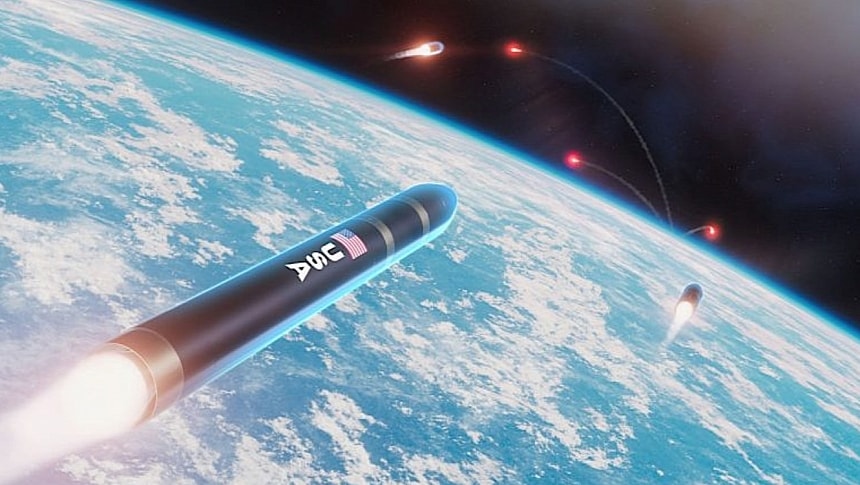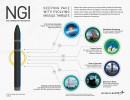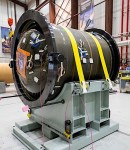The name Aerojet Rocketdyne is one of the best known in the space exploration business. On the market in one form or another since 1915, when it used to make rubber products, the company has grown into a powerhouse that helped deliver some of America's most daring space projects.
It all started back in the 1960s when the company supplied the F-1 to NASA to use in the first stage of the Saturn V rocket that helped put astronauts on the Moon as part of the Apollo program. It also supplied Boeing's X-51 supersonic plane with a dual ramjet/scramjet engine, and a series of other powerplants that were used in the Delta family of rockets.
Aerojet Rocketdyne was also one of the pillars of the Space Shuttle program, supplying NASA with a type of engine called RS-25 for the spacecraft. The engines were so successful and are so well built that they are currently being used to power the Space Launch System rocket of the Artemis program.
The nature of its business means that Aerojet Rocketdyne also crossed paths with the military from time to time, and that's something that will probably happen a lot more often now that the company is owned by defense contractor L3Harris. And we just got another confirmation of Rocketdyne's involvement in one of America's most important defense project.
It's called Next Generation Interceptor (NGI) and it is run by the Missile Defense Agency with the single purpose of giving the nation a proper "first line of defense against long-range ballistic missile threats from rogue nations. "
The NGI program has been ongoing for about half a decade and it is meant to deliver in the hands of America's defenders the most advanced Ground-based Midcourse Defense (GMD) system ever.
The present-day GMD comprises around 44 weapons systems deployed in Alaska and California and tasked with countering potential ballistic missile heading their way, including nuclear-capable ones.
The NGI interceptors, whose exact specifications are not public knowledge, will comprise a three-stage booster that will push the kill vehicle to its target.
Two teams have been in the cards to make the NGI a reality, namely Northrop Grumman/Raytheon and Lockheed Martin/Aerojet Rocketdyne. Back in April, the U.S. military selected the latter group to handle the NGI program.
For this project, Lockheed Martin will use the experience gained with the Terminal High Altitude Area Defense (THAAD) system, in use by the U.S. Army ever since 2008, and will pair that with insight gained with the submarine-launched Trident II ballistic missile.
It was clear from the get-go that Aerojet Rocketdyne's involvement would not be marginal, and that became obvious this week when the company announced it was tasked with being NGI's propulsion system provider. No actual details were given as to what kind of engines the interceptors will use
The U.S. plans to deploy the new interceptors in 2027 or 2028 and it will pay a $17 billion contract to the companies involved, an amount that should take care of everything, from the development of the weapon to its operational readiness well into the 2030s.
Aerojet Rocketdyne was also one of the pillars of the Space Shuttle program, supplying NASA with a type of engine called RS-25 for the spacecraft. The engines were so successful and are so well built that they are currently being used to power the Space Launch System rocket of the Artemis program.
The nature of its business means that Aerojet Rocketdyne also crossed paths with the military from time to time, and that's something that will probably happen a lot more often now that the company is owned by defense contractor L3Harris. And we just got another confirmation of Rocketdyne's involvement in one of America's most important defense project.
It's called Next Generation Interceptor (NGI) and it is run by the Missile Defense Agency with the single purpose of giving the nation a proper "first line of defense against long-range ballistic missile threats from rogue nations. "
The NGI program has been ongoing for about half a decade and it is meant to deliver in the hands of America's defenders the most advanced Ground-based Midcourse Defense (GMD) system ever.
The present-day GMD comprises around 44 weapons systems deployed in Alaska and California and tasked with countering potential ballistic missile heading their way, including nuclear-capable ones.
The NGI interceptors, whose exact specifications are not public knowledge, will comprise a three-stage booster that will push the kill vehicle to its target.
Two teams have been in the cards to make the NGI a reality, namely Northrop Grumman/Raytheon and Lockheed Martin/Aerojet Rocketdyne. Back in April, the U.S. military selected the latter group to handle the NGI program.
For this project, Lockheed Martin will use the experience gained with the Terminal High Altitude Area Defense (THAAD) system, in use by the U.S. Army ever since 2008, and will pair that with insight gained with the submarine-launched Trident II ballistic missile.
It was clear from the get-go that Aerojet Rocketdyne's involvement would not be marginal, and that became obvious this week when the company announced it was tasked with being NGI's propulsion system provider. No actual details were given as to what kind of engines the interceptors will use
The U.S. plans to deploy the new interceptors in 2027 or 2028 and it will pay a $17 billion contract to the companies involved, an amount that should take care of everything, from the development of the weapon to its operational readiness well into the 2030s.






